Abstract
1. Specific warm receptors in the nasal region of cats were studied by recording afferent impulses from single units dissected from the infraorbital nerve. In addition, a few cold fibres from the same region were examined.
2. Numerous warm fibres with spot-like receptive fields were found on the back of the nose. They were not excited by mechanical stimulation.
3. Multi-fibre strands serving this area responded to moderate warming with an increase of the integrated discharge.
4. At constant temperatures from 30° C on, single warm fibres showed a steady discharge with a regular sequence of impulses, the frequency of which rose steeply with temperature and reached a maximum between 45 and 47° C. At higher temperatures the frequency fell to zero.
5. Rapid warming caused a dynamic overshoot, rapid cooling a transient inhibition of the warm fibre discharge. The highest dynamic frequencies of single fibres were 200 impulses/sec.
6. For a large population of single warm fibres the average maximum of static activity was 36 impulses/sec at 46° C, whereas the cold fibre population had a maximum of 9 impulses/sec at 27° C.
Full text
PDF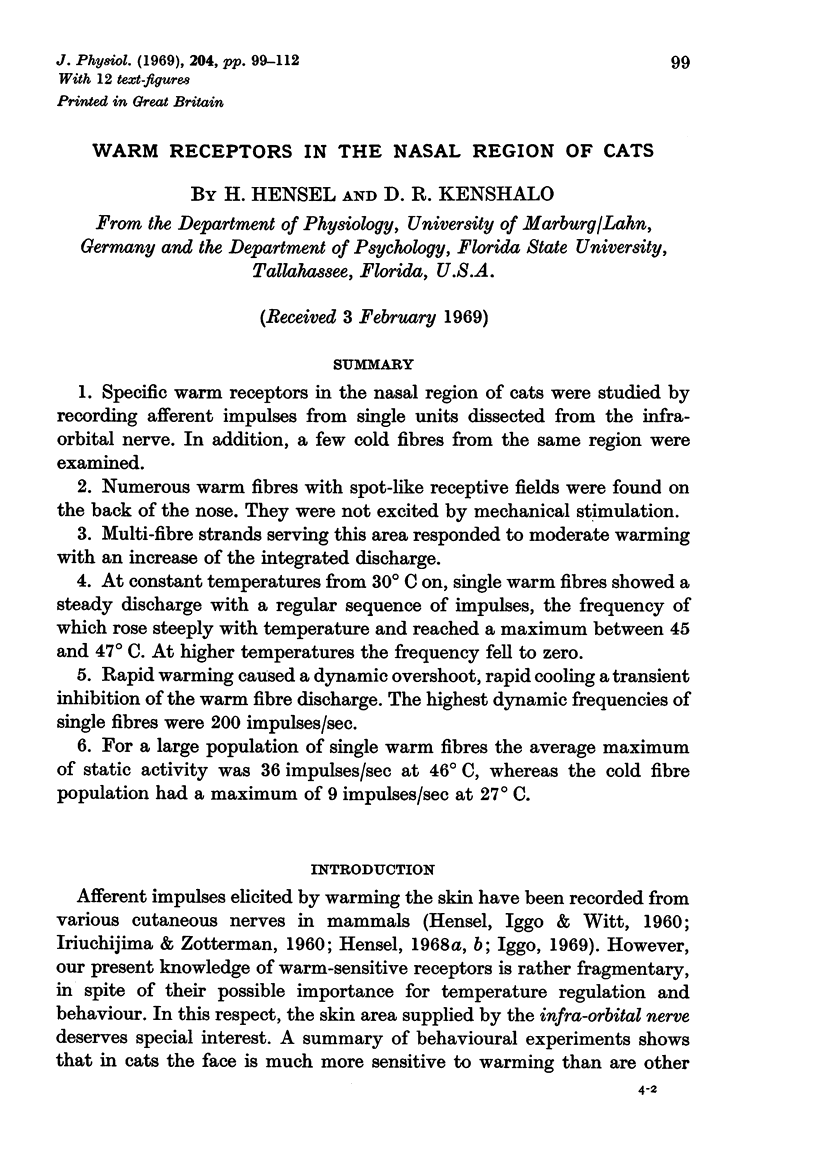
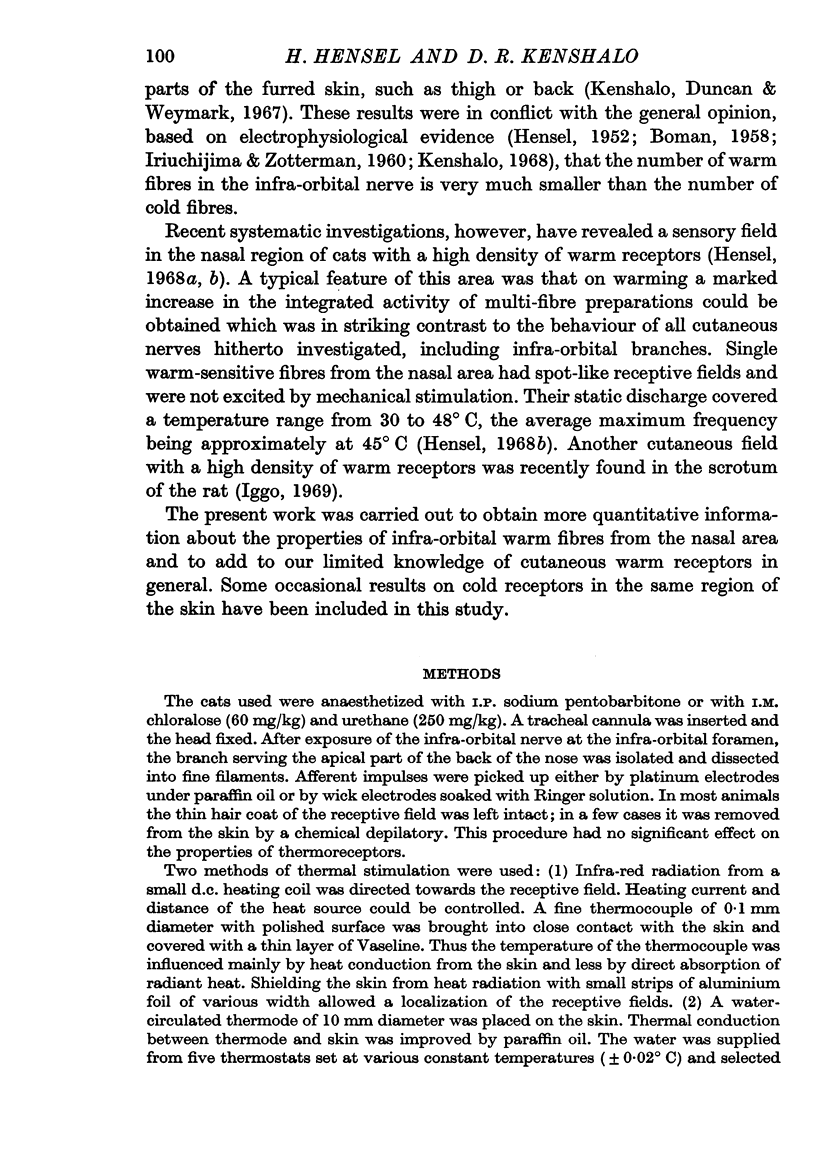
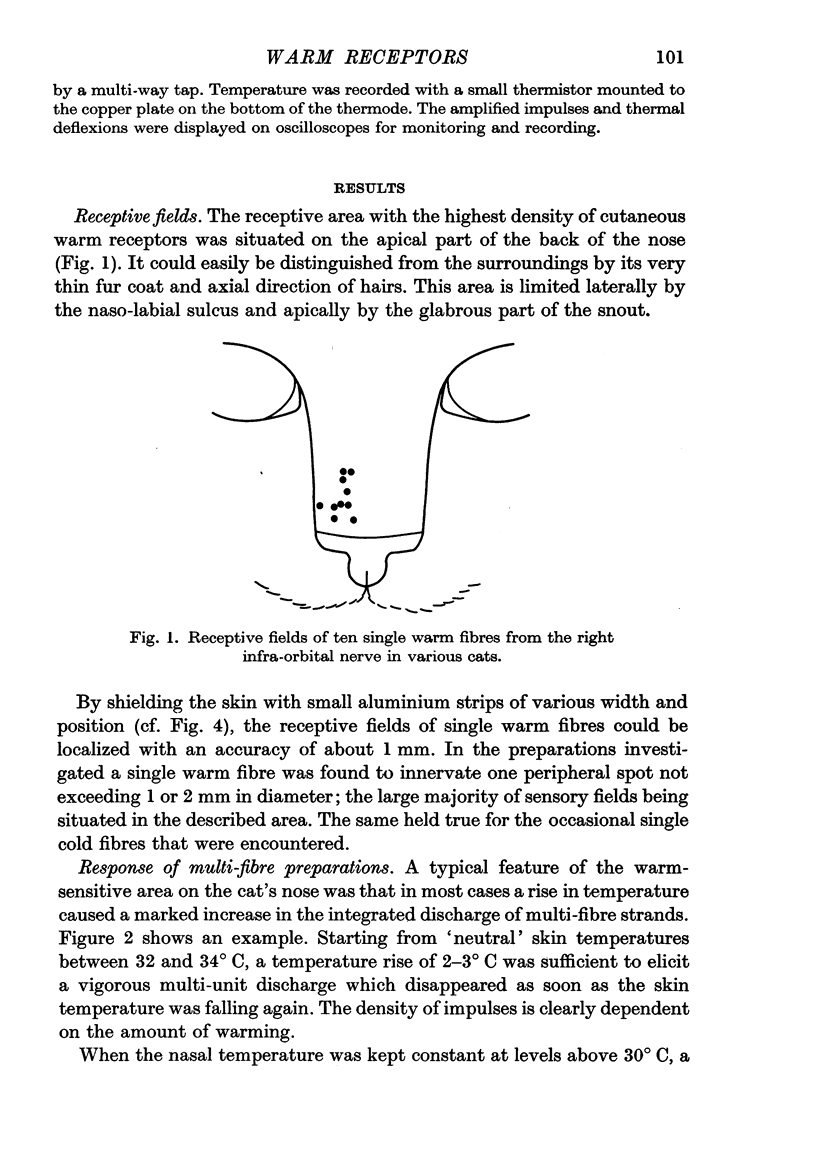



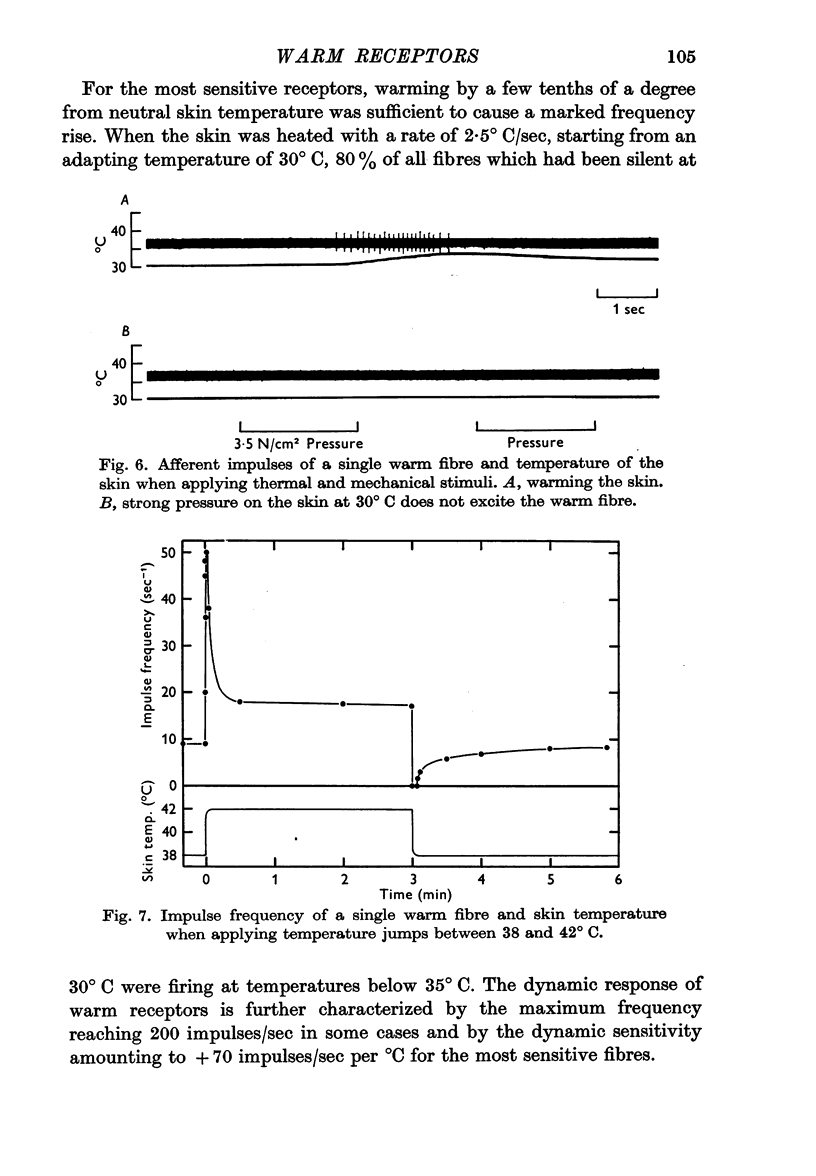


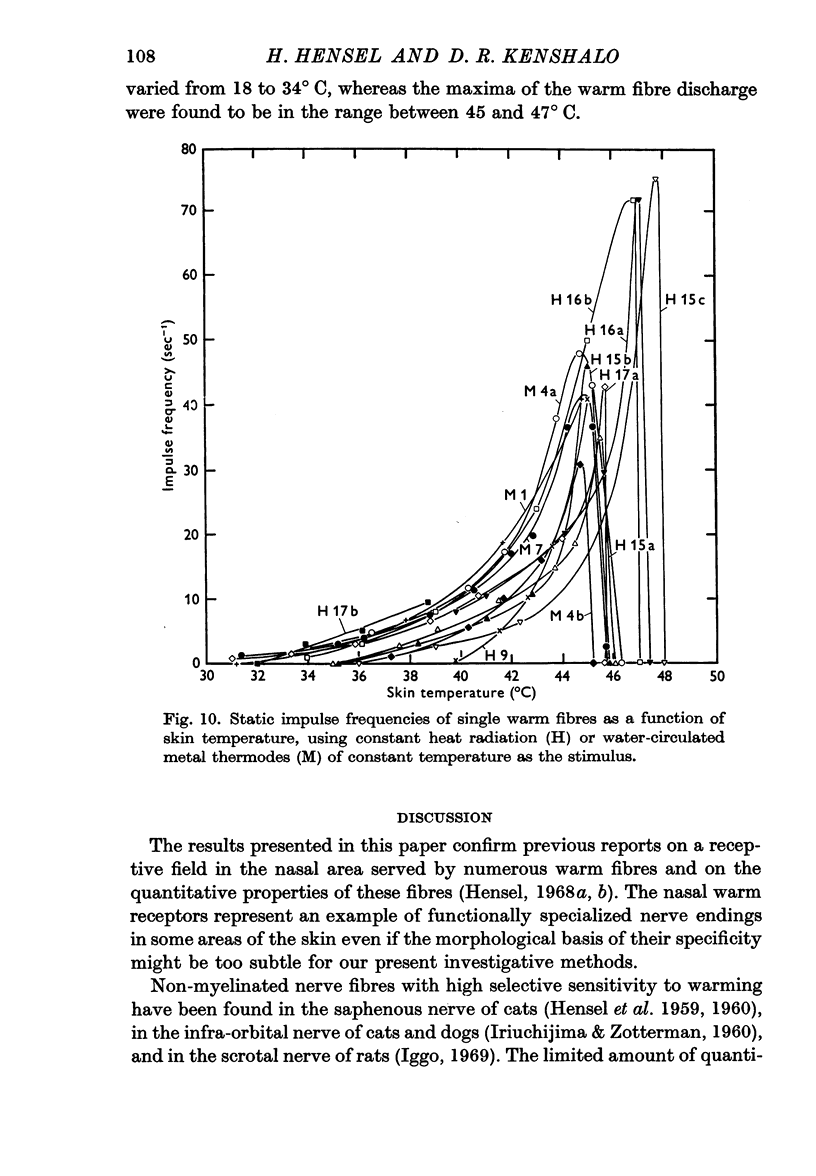
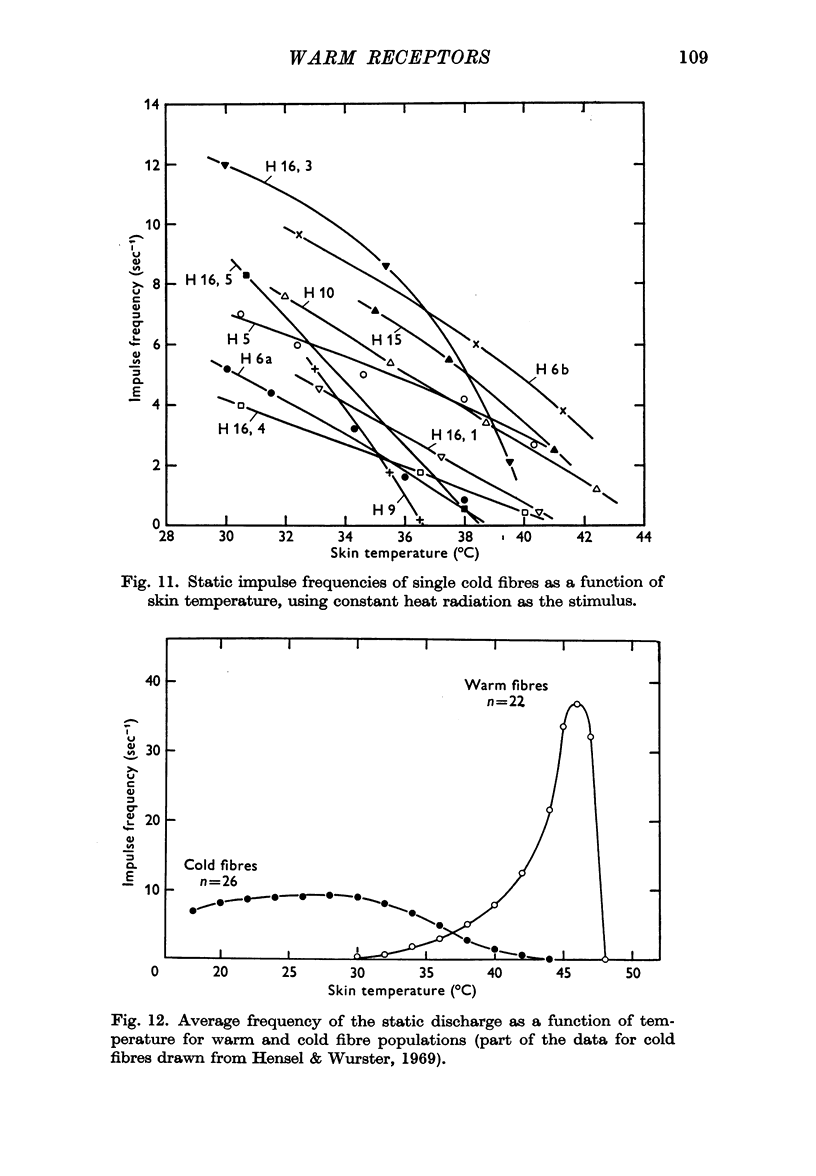
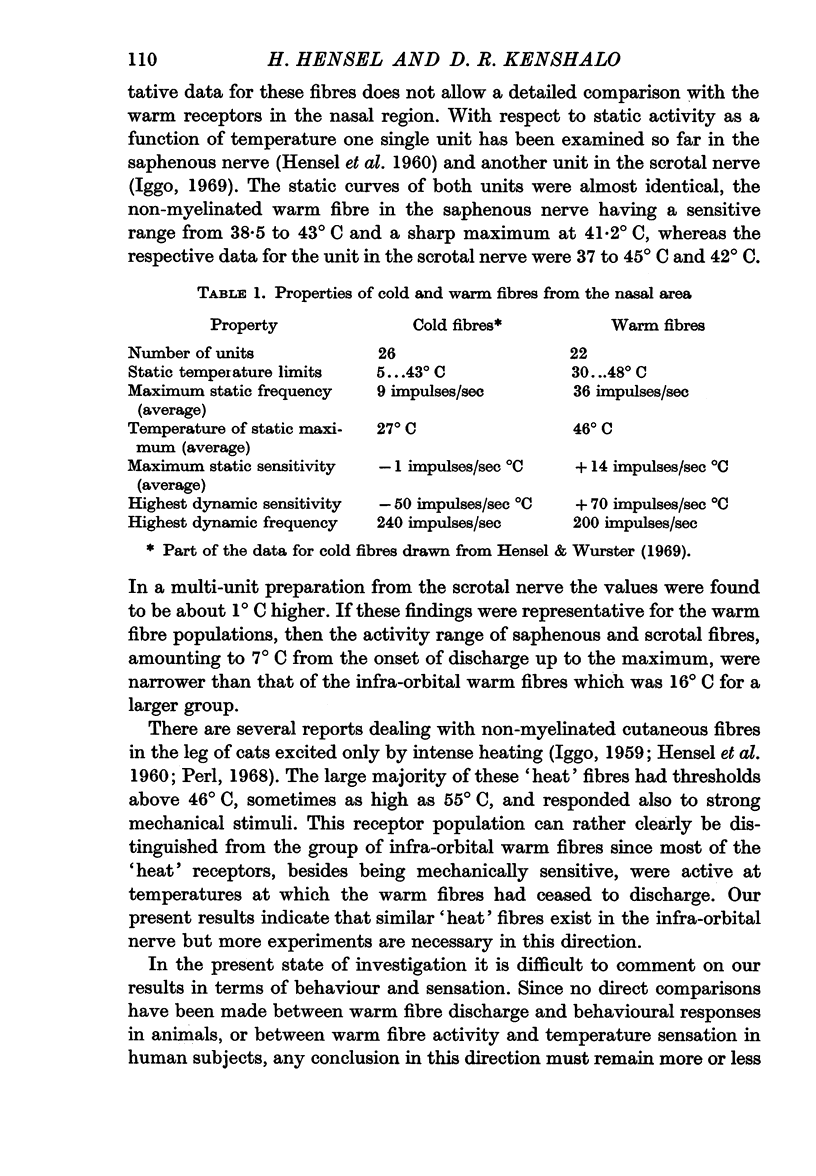
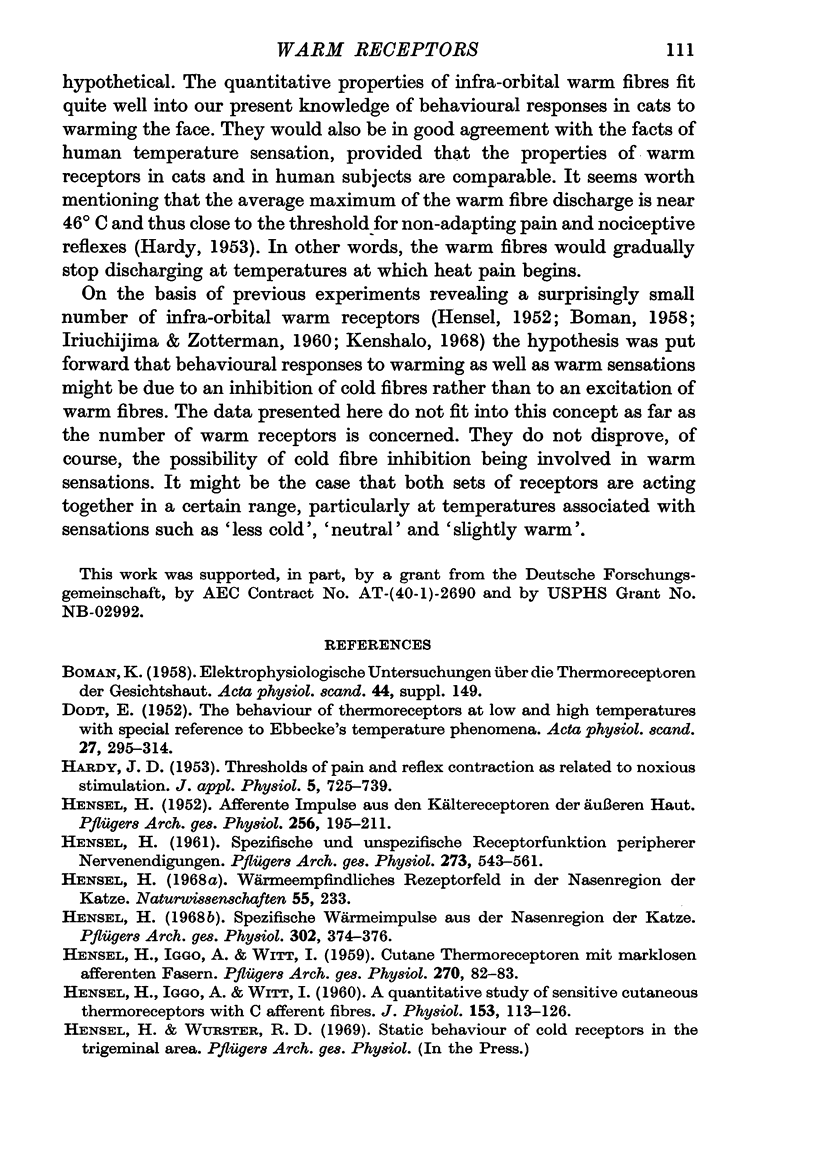
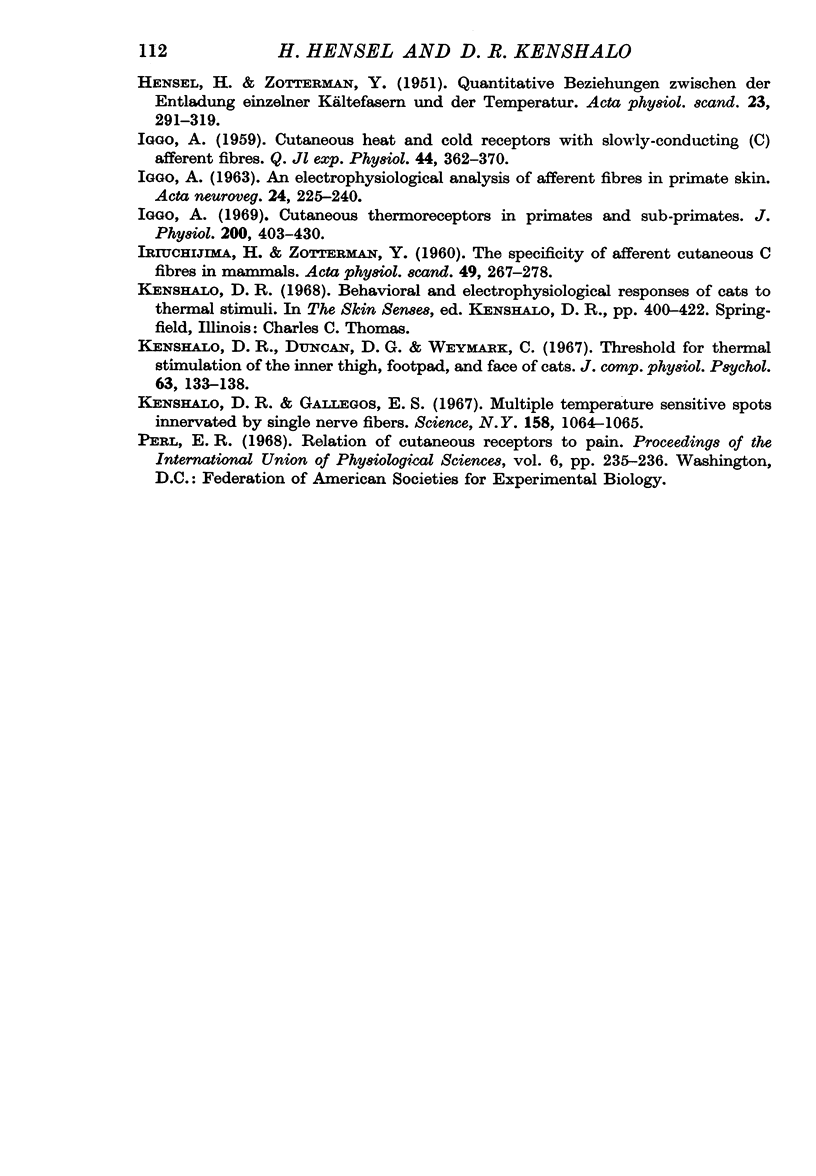
Selected References
These references are in PubMed. This may not be the complete list of references from this article.
- DODT E. The behaviour of thermoceptors at low and high temperatures with special reference to Ebbecke's temperature phenomena. Acta Physiol Scand. 1953 Feb 28;27(4):295–314. doi: 10.1111/j.1748-1716.1953.tb00944.x. [DOI] [PubMed] [Google Scholar]
- HENSEL H. Afferente Impulse aus den Kältereceptoren der äusseren Haut. Pflugers Arch. 1953;256(3):195–211. doi: 10.1007/BF00364326. [DOI] [PubMed] [Google Scholar]
- HENSEL H., IGGO A., WITT I. A quantitative study of sensitive cutaneous thermoreceptors with C afferent fibres. J Physiol. 1960 Aug;153:113–126. doi: 10.1113/jphysiol.1960.sp006522. [DOI] [PMC free article] [PubMed] [Google Scholar]
- HENSEL H., ZOTTERMAN Y. Quantitative Beziehungen zwischen der Entladung einzelner Kältefasern und der Temperatur. Acta Physiol Scand. 1951 Sep 21;23(4):291–319. doi: 10.1111/j.1748-1716.1951.tb00817.x. [DOI] [PubMed] [Google Scholar]
- Hensel H. Spezifische Wärmeimpulse aus der Nasenregion der Katze. Pflugers Arch. 1968;302(4):374–376. doi: 10.1007/BF00592734. [DOI] [PubMed] [Google Scholar]
- Hensel H. Wärmeempfindliches Rezeptorfeld in der Nazenregion der Katze. Naturwissenschaften. 1968 May;55(5):233–233. doi: 10.1007/BF00606226. [DOI] [PubMed] [Google Scholar]
- IGGO A. Cutaneous heat and cold receptors with slowly conducting (C) afferent fibres. Q J Exp Physiol Cogn Med Sci. 1959 Oct;44:362–370. doi: 10.1113/expphysiol.1959.sp001417. [DOI] [PubMed] [Google Scholar]
- IRIUCHIJIMA J., ZOTTERMAN Y. The specificity of afferent cutaneous C fibres in mammals. Acta Physiol Scand. 1960 Jul 15;49:267–278. doi: 10.1111/j.1748-1716.1960.tb01952.x. [DOI] [PubMed] [Google Scholar]
- Iggo A. Cutaneous thermoreceptors in primates and sub-primates. J Physiol. 1969 Feb;200(2):403–430. doi: 10.1113/jphysiol.1969.sp008701. [DOI] [PMC free article] [PubMed] [Google Scholar]
- Kenshalo D. R., Duncan D. G., Weymark C. Thresholds for thermal stimulation of the inner thigh, footpad, and face of cats. J Comp Physiol Psychol. 1967 Feb;63(1):133–138. doi: 10.1037/h0024177. [DOI] [PubMed] [Google Scholar]
- Kenshalo D. R., Gallegos E. S. Multiple temperature-sensitive spots innervated by single nerve fibers. Science. 1967 Nov;158(3804):1064–1065. doi: 10.1126/science.158.3804.1064. [DOI] [PubMed] [Google Scholar]


